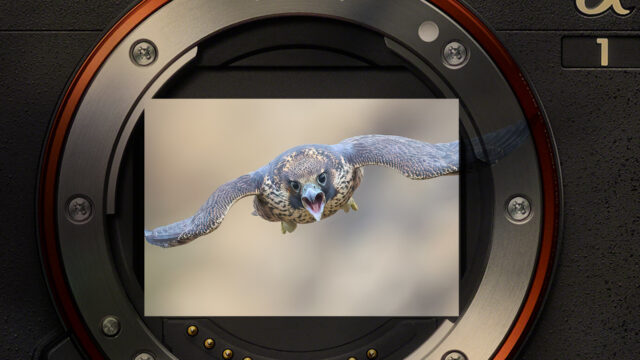
Sony Alpha-1 field review for avian photography
Introduction
Released in Q1 2021, the A-1 is Sony’s flagship mirror-less professional camera. The A-1 is a novel camera, one that makes no compromise between speed and resolution. Powered by Sony’s most advanced AF system yet, the A-1 shoots 50 mega pixels at 30 fps. The A-1 is not an evolution or an incremental improvement to the previous flagship, the A-9 MK II, rather it’s an entirely new camera under an identical skin. In this review I will share my findings after using this camera for about 5 months and after putting it through its paces.
Body and Design
From the outside the Sony A-1 does not look like the typical professional sports/wildlife camera. It is tiny next to the tower-like bricks that are the Nikon D5/D6 or the Canon EOS-1D X series pro DSLR camera (see my review of the D5 and the 1DX ). The compact form factor is enabled by the lack of a mirror box, a viewfinder prism as well as a sub-mirror assembly found in the mentioned DSLR cameras. Lack of any mirror means the sensor sits almost flush with the front of the body making the camera narrower (and the sensor much easier to access for cleaning). The A-1 does not have an integrated vertical grip, but one can be attached to it (VG-C4EM). The A-1 weighs 1.7 lbs (760 g) with a single NP-FZ100 battery, and 2.5lbs (1141 g) with the vertical grip attached and loaded with two NP-FZ100 batteries. For comparison the Nikon D6 weighs 3.2 lbs and the Canon EOS-1DX MK III tips the scale at 3.17 lbs (both with batteries).
Even with the optional battery grip, the A-1 is smaller and lighter than the pro DSLR’s. This is an advantage as the camera can fit in a very small bag after detaching the grip, and can be carried around conveniently for any job, all day long. Size and weight are no longer excuses for not to have the best possible tool for capturing the moments, even casual ones. The smaller size does not translate to a lower build quality however, the A-1’s shell is made of dense magnesium alloy and sealed against dust and moisture. Sony indicate the A-1 weather sealing spec is tighter than that of the A-9 II. I had previously used the A-9 II for a year in cold and hot temperatures as well in dust and light rain without any issues.
Most frequently used dials and buttons on the A-1 body are large enough to be operated when wearing gloves, some of the buttons are smaller than the pro DSLR’s though. Almost every button on the A-1 can be customized to perform a different task, rather than the default function programmed at the factory. Most users will find a way to set the camera up exactly to their liking. There are 4 custom function buttons (C1, C2, AF-ON and AEL) that can be accessed easily when handholding a larger lens such as the FE 600mm f/4 GM, my primary lens. The camera can be operated one-handed. I also like the “slightly” retro design of the A-1 but with all the modern DSLR-like controls rather than the pointless retro-style dials and controls found on some of the mirrorless cameras.
As mentioned, the A-1 does not have an integrated vertical grip, however one can be added to it. To attach the battery grip the battery bay door must be removed to allow the tower-like extension of the grip to sit inside the battery bay. Removing the battery bay door could be annoying, I much prefer the Nikon D850 style grip but perhaps Sony’s approach is required for better moisture sealing. The grip takes two batteries.
The A-1 can charge the battery in-camera (with or without the grip) with the USB-C cable. If you forget to charge your batteries, you can simply use a USB-C car charger to charge the batteries while driving to the location- a neat feature.
Many of camera’s functions can also be activated by the touch screen, the touch screen is overall responsive but not as good as something like an iPhone. The rear LCD is also a bit low in resolution (1.4 million dots) but at least it is articulating for ground level shots.
The A-1’s dual card slots take both SD cards and the rare CFExpress type-A cards (CFExpress is the PCI-E interface for imaging cards) which support up to 800MB/sec write speeds. Currently type-A cards are only available from Sony and carry a high premium over the faster but more common CFExpress type-B cards that are available from a number of manufacturers. Given that even the 300MB/sec SDXC UHS-II SD cards are too slow for some of the camera’s features such as 8K or 4K 120p video recoding, a dual CFExpress type-B would have been a more logical choice even at the expense no SD card compatibility.
Thanks to a sophisticated thermal design the Sony A-1 does not overheat, limit its functionality, or shutdown like the Canon R5. Sigma-shaped graphite thermal conductors are incorporated in the sensor assembly’s image stabilizer unit that dissipate the heat generated by the sensor’s high speed readout circuit away from the sensor as shown below.
I shot about 40 minutes of 8K video with the camera, and while the grip got noticeably warm it kept on shooting until the card was full. I have never experienced any heating during still photography.
EVF
EVF has been, is and will likely remain the Achilles heel of the most MILC cameras out there when it comes to professional action photography. Low refresh rate, blackout during the shutter release and lag or the lack of a true live image when shooting a burst (aka the slide-show effect) renders most of such cameras useless for serious action photographers. At the time of writing this review the Sony A-9 series and the A-1 are the only cameras that can offer a true lag and blackout-free EVF experience. The A-1’s EVF is the highest resolution EVF ever made for a commercial digital still camera and features a 9 million dot or approx. 3.1 mega pixel micro-OLED display. When using the electronic shutter (e-shutter) the EVF has zero blackout. During a burst the finder remains 100% live and fluid like a video camera with no indication that the camera is actually shooting a burst. The highest resolution is only available at 60Hz however. This is for every day use but for action and when panning at long focal lengths the 120Hz setting must be used which will reduce the resolution from 3 to about 2 mega pixels. When panning at 1200mm or shooting such birds as swallows, purple martins etc. in flight users will need to set the finder to the high+ setting that provides an impressive 240Hz refresh rate. The motion is absolutely fluid at this setting. At 240Hz, the viewfinder image is shrunk in size and displayed inside a black frame. Only the image and not the black frame is refreshed at 240Hz thus the EVF’s data link bandwidth can handle such high refresh rate.
The A-1 EVF is also one of the largest (if not the largest) finders that has ever been fitted to a full-frame camera. Users who wear glasses will find that it is difficult to see the entire image. The camera can be set to shrink the image and add the black border (similar to the hi+ settings) to make it easier for the eyeglass wearers to see the entire image. Users can set this regardless of the refresh rate.
The quality of the EVF is high overall especially at 60Hz when the resolution is highest. The dynamic range is quite good which makes it close to an optical finder (OVF) in the DSLR. There are still some differences though between an OVF and an EVF, including perception of depth which has to do with the angle of incident light and something that cannot be replicated by a flat screen used in an EVF. Also in back-lit situations, sometimes the fidelity of the EVF image isn’t quite the same as the OVF. On the other hand, the EVF can reflect the accurate exposure which make it easy to set the exposure perfectly for every frame.
As the technology progresses the EVF resolution will continue to increase and surpass the human visual acuity limit. However the A-1 EVF is now fully ready for prime time and the zer0-blackout feature, by far outweighs the small drawbacks of the EVF for action shooters. For the first time since the invention of the SLR camera, the users can actually see the action fluidly as it happens with no interruption from the swinging mirror or the shutter curtain. This is a significant advantage when tracking BIF handheld with a large lens. Shooting with the pro DSLR’s, many of my missed images were simply partially clipped frames where I could not see and fit the bird in the frame during the burst. With the A-1 you can actually see what’s happening and track the bird perfectly. the example below is a handheld full frame image of a black skimmer at 1200mm (600mm f/4 + 2X TC). There is hardly any room left around the bird, but thanks to the black-out free finder I was able to obtain many frames like this (this image was taken with the older A-9 MK II)
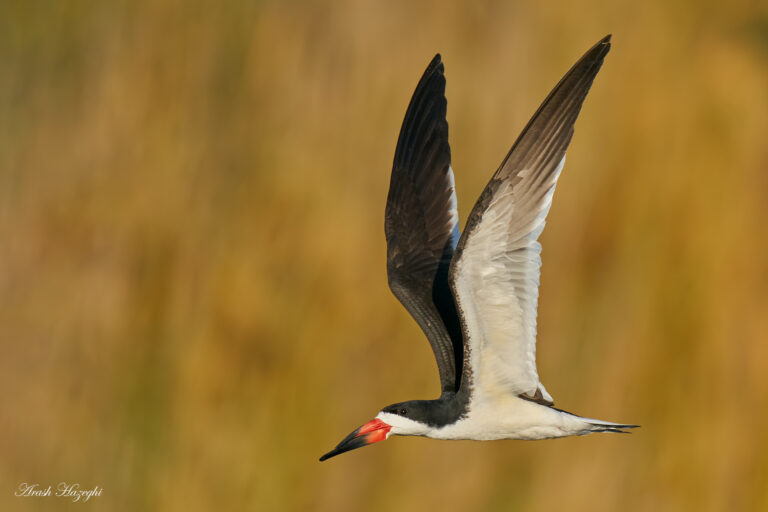
Black skimmer. A9 MKII and FE 600mm f/4 GM + 2X TC (1200mm). ISO-1600 f/8 1/3200 sec. Handheld. Processed with C1P. Full-frame image. Click on the image to enlarge
Needless to say insane burst speeds like 30 fps is not possible with a moving mirror.
Battery life:
The A-1 takes a single NP-FZ100 lithium ion batteries rated at 2280mAh and 16.4Wh. Most users will opt for the vertical grip when handholding long lenses. With two batteries in the grip the total capacity increases to 4560mAh and 32.8 Wh. This is significantly higher than a single large battery in the case of the Nikon D6 (2500mAh 27Wh) and the Canon EOS-1D X MK III (2700mAh). As mentioned above camera ships with a single charger but there are a variety of aftermarket dual chargers available.
The battery consumption model for the mirror-less cameras is quite different compared to the old DSLR’s. In the pro DSLR the mirror mechanism consumes significant energy during a burst, whereas in the mirror-less cameras there is no mirror and mechanical movement in the camera that consumes any power. On the other hand, observing the scene or spotting with a DSLR consumes no energy whereas in the MLIC the EVF or the rear LCD can consume significant power if left on for a very long period of time. The battery life this highly depends on the usage model. The A-1’s EVF can consume more power than than an average mirror-less camera given its higher resolution and when it is set to hi+ (240Hz). But taking hundreds of frames in a burst hardly depletes the battery.
After extensive use in the field, I have found the two batteries to last for about 5-6 hours of solid continuous EVF/LCD use with no break. This means if the user is periodically shooting bursts with the power saving feature on-a common scenario in bird photography- the camera can easily last for a day and shoot 8-9K frames. This is 2-3X more than what I used to get with my D5 and 1D X series cameras with a single large battery.
Overall going to the filed with 3 fully charged batteries should eliminate any anxiety about batteries running out for a full day of action packed shooting.
Shooting 8K video with the A-1 is a different story where the batteries can deplete before the cards are full and thus an external power source is recommended for extensive 8K video usage.
As mentioned before the batteries can be charged in-camera by using the USB-C cable.
Image quality:
Almost every single digital camera made to date by Canon, Nikon and Sony focused on either speed or resolution but not both. Nikon and Canon’s flagship DSLR’s are both stuck at 20 mega pixels for about a decade now. Sony’s own Alpha-9 MK II was “only” 24 mega pixels. However with the A-1 Sony increased the resolution to a whopping 50 mega-pixels while upping the burst rate from 20 to a mouthwatering 30 fps! High speed and high resolution coexist in a digital camera for the first time. But has this resulted in more noise and degradation of the image quality or images that are slightly soft when viewed at 100% ? the answer is definite no.
The images below compare the raw output from the A-1 and the A-9 MKII when viewed at 100% with no resizing. Both cameras were set to raw and shot remotely on a tripod. Even at 100% there is little difference in visible noise/grain and of course the A-1 carries a lot more fine details. After processing and down sampling, A1’s images often look even better than the A-9 MK II, up to ISO-6400 which is my top limit for bird photography. The A-1 also removes the optical low-pass filter in front of the sensor so its files look sharper at pixel level and require less sharpening than the A-9 MK II, or the Nikon D5/D6 which suffered from a visible softening by the LPF. In short Sony has doubled the pixel count, increased the speed by 1.5 x and made the images sharper at pixel-level, all without impacting the noise much compared to the A-9 MK II, this is a significant achievement.
High ISO comparison (ISO-6400)
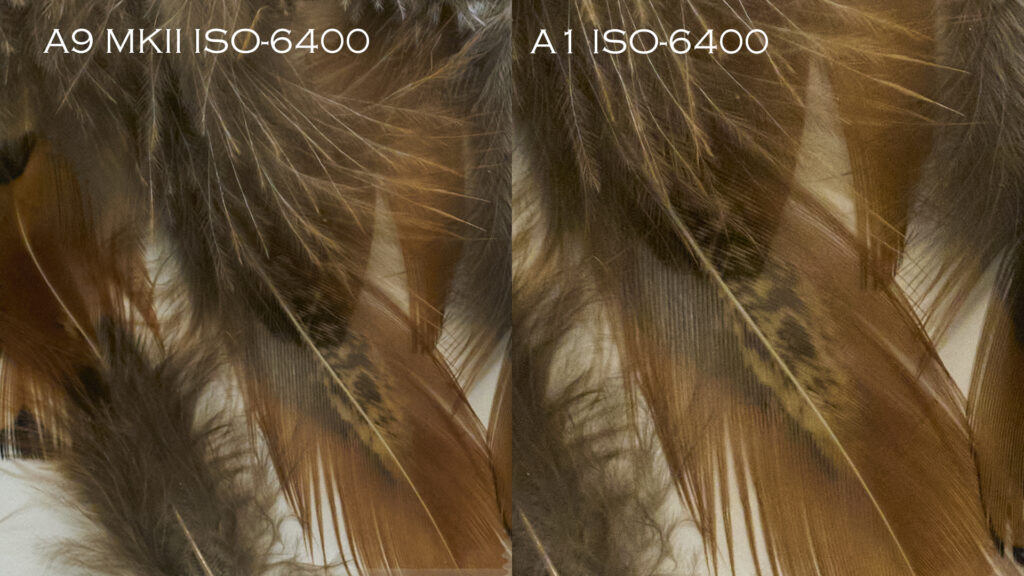
100% crop from raw. ISO-6400. left: A9 MKII right: A1. Click on the image to enlarge. processed with C1P
Medium ISO comparison (ISO-1600)
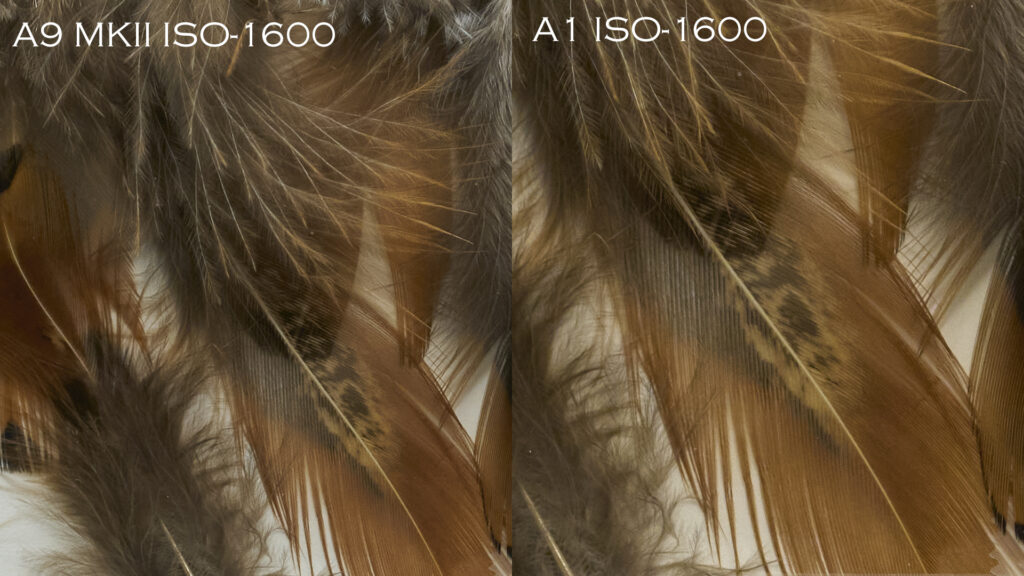
100% crop from raw. ISO-1600. left: A9 MKII right: A1. Click on the image to enlarge. processed with C1P
Low ISO comparison (ISO-400)
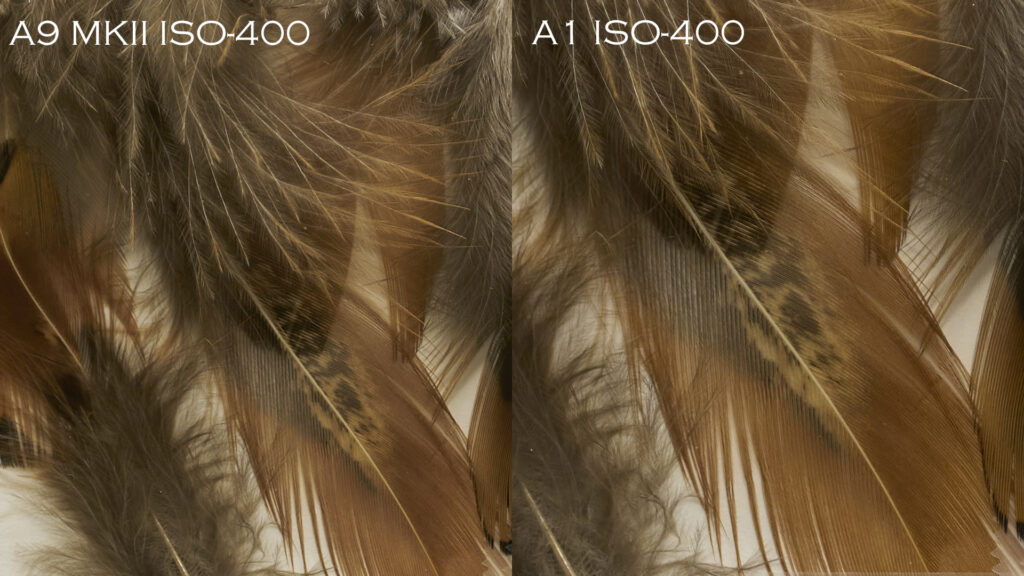
100% crop from raw. ISO-400. left: A9 MKII right: A1. Click on the image to enlarge. processed with C1P
Due to the perfect focus the camera can deliver tack sharp BIF images with the level of details previously only seen in perched shots thanks to the 50 mega pixel image sensor.

Dowitcher, A1 and FE 200-600mm f/5.6-6.3 G at 600mm. ISO-1250 f/6.3 1/4000sec. Handheld. Processed with C1P. Click on the image to enlarge.
100% crop from above, notice the tiny webbing patterns on the wing feathers seen in the 100% crop from raw.
Also thanks to the high resolution and sharper files, insane crops can be made when there is not other way to capture a unique subject.

Sanderling. A1 and FE 200-600mm f/5.6-6.3 G at 600mm. ISO-1000 f/6.3 1/4000sec. Handled. Processed with C1P. The image is just 20% of the full frame. Click to enlarge.
Similar to the A-9 series, in order to shoot at the highest burst rate (30 fps ) and also get more images in the buffer, the camera must be set to what Sony call “lossy” compressed raw. After meticulously comparing hundreds of frame, I have concluded that this compression does not impact the image quality for avian subjects in any visible way. The buffer capacity is about 155-160 compressed raw files (or about 5 seconds of continuous shooting at 30fps) , thanks to the fast CFexpress interface, the buffer clears rapidly and the camera can shoot at full speed again, in just a moment after the buffer fills up. However with the 300MB/sec XD XC UHS-II cards, the camera will struggle to flush the buffer and will significantly reduce the burst rate. I do not recommend using an SD card for shooting action with the A-1.
The A-1 is also by far the best low-light camera that I have ever used for action. There is really no comparison to the DSLR’s in this regard primarily because of the accuracy and consistency of AF even at low light where very high ISO is typically used. At high ISO images will have some noise, so if the critical focus is off-even just by a tiny amount-the resulting image is pretty much useless because the extra sharpening needed to enhance the image will aggravate the noise and reduce the IQ. With the Al-1 the critical focus is nailed every time, and the images respond much better to noise reduction.
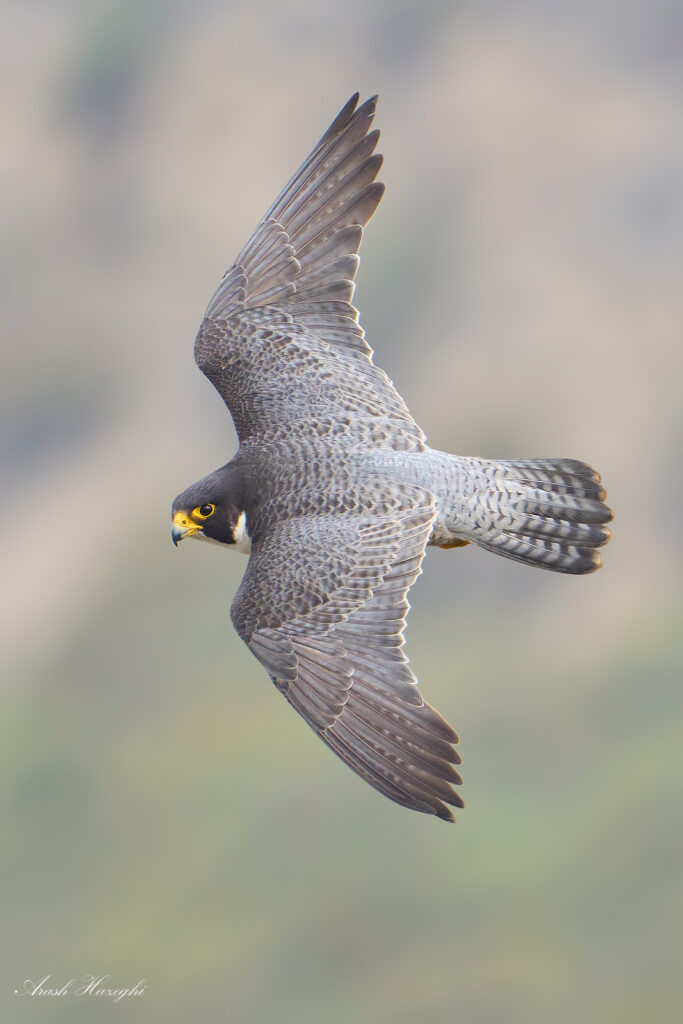
Peregrine falcon. Shot with A1 and the 200-600 f/5.6-6.3 at 600mm ISO-3200 f/6.3 1/3200 sec handheld. Processed with C1P. Click on the image to enlarge
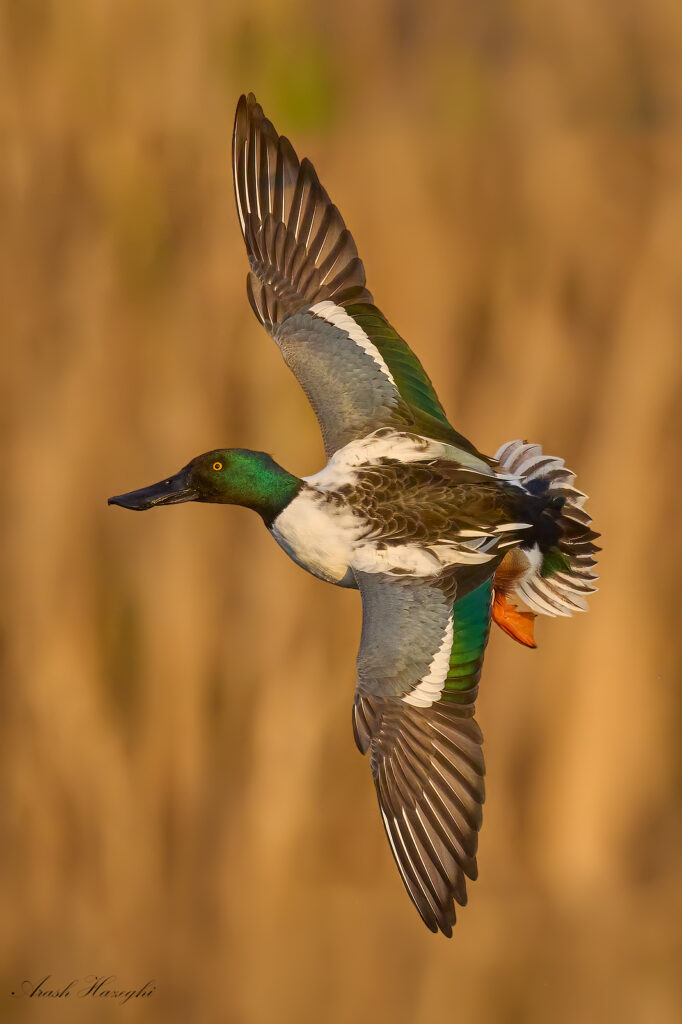
Northern shoveler. shot with the Alpha-1 and FE 600mm f/4 GM +2X TC (1200mm). ISO-5000 f/8 1/3200 sec. handheld. processed with C1P.click on the image to enlarge.
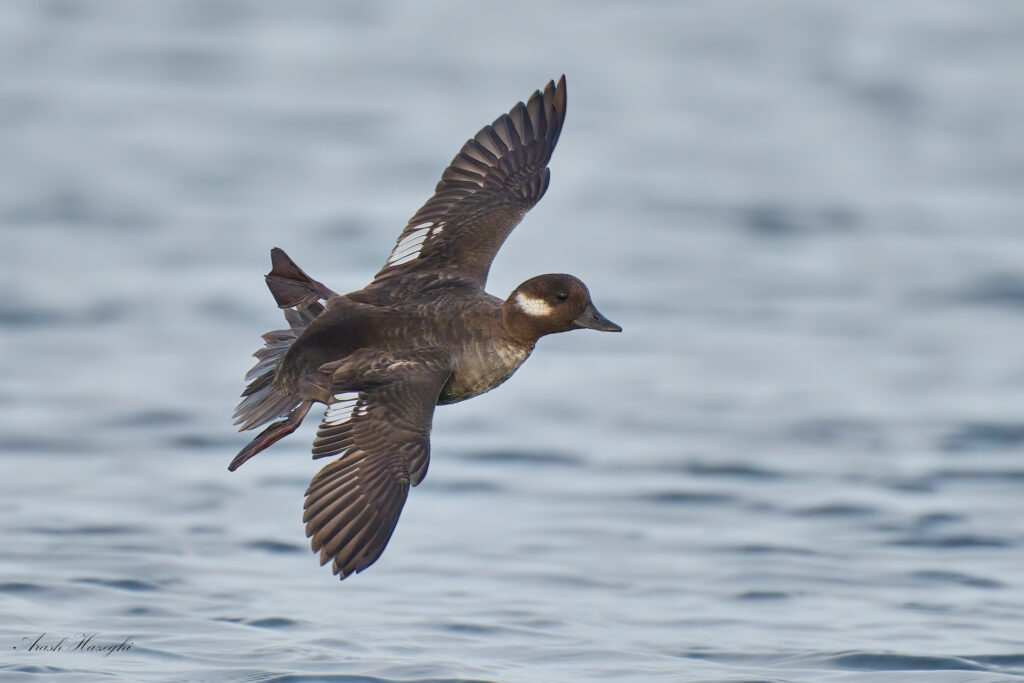
Female bufflehead. Shot with A1 and FE 600mm f/4 GM + 2X TC (1200mm). ISO-6400 f/8 1/2500 sec. Handheld. processed with C1P. Image taken in very lowlight, 50% crop. click on the image to enlarge.
AF
The AF technology in the Sony MILC is fundamentally different than the old DSLR’s. In this article, I explain these fundamental differences in detail. Overall when shooting dynamic fast-paced subjects, a skilled photographer can expect north of 95% keeper rate with the Sony A-1. This figure would be somewhere around 60% with the Nikon pro DSLR’s and less than 40% with the Canon pro DSLR’s in my experience, if a critically sharp raw file is required. It is safe to say there is no comparison when it comes to shooting dynamic BIF.
To get an idea about the AF performance of the A-1, it suffices to look at the two images below taken with a low-cost zoom lens in low light. With the right technique/settings, capturing such images is relatively easy and does not require a lot of “luck” and gambling with the AF. I was not expecting much if any action at this location so I only took my FE 200-600mm f/5.6-6.3 G instead of my FE 600mm f/4 GM lens. The zoom is not a terribly fast lens but I was really surprised how well the AF performed. Previously when shooting with DSLR’s anything less than a prime super-telephoto f/4 would have been a waste of time at this location under this light.
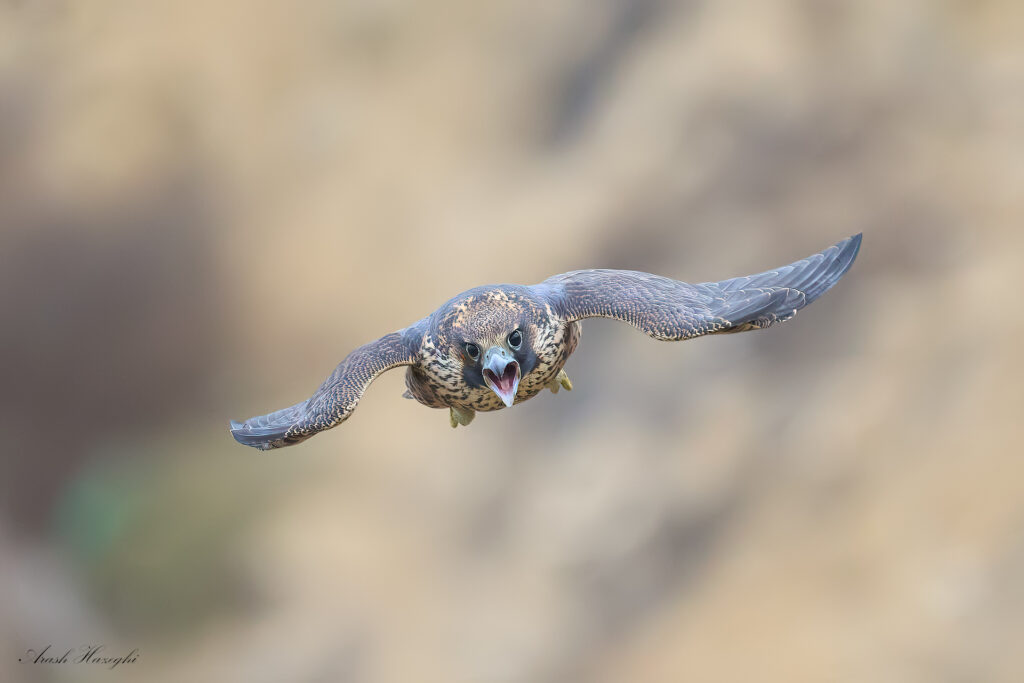
Peregrine falcon stoop. During a high-speed stoop the peregrines can accelerate to 200+ mph making them the fastest animal on the planet. Although I cannot tell how fast this juvenile was flying but it appeared from afar and landed a few yards away in a matter of seconds. Shot with A-1 and 200-600mm f/5.6-6.3 ISO-2500 f/6.3 1/3200 sec. Handheld. processed with C1P. Zone AF pattern. Click on the image to enlarge
During the shoot the A-1 virtually nailed every single stoop and almost every frame in the sequence.

Screen shot from Capture One Pro 100% raw view. there were 30 frames in this sequence, all of the frames are equally sharp as the camera tracked the falcon head-on against a varied background in low light.
I made a clip of the sequence (80 frames or about 2.5 seconds), you can see how well the camera is tracking the juvenile falcon against a busy background in a low light and low contrast scene.
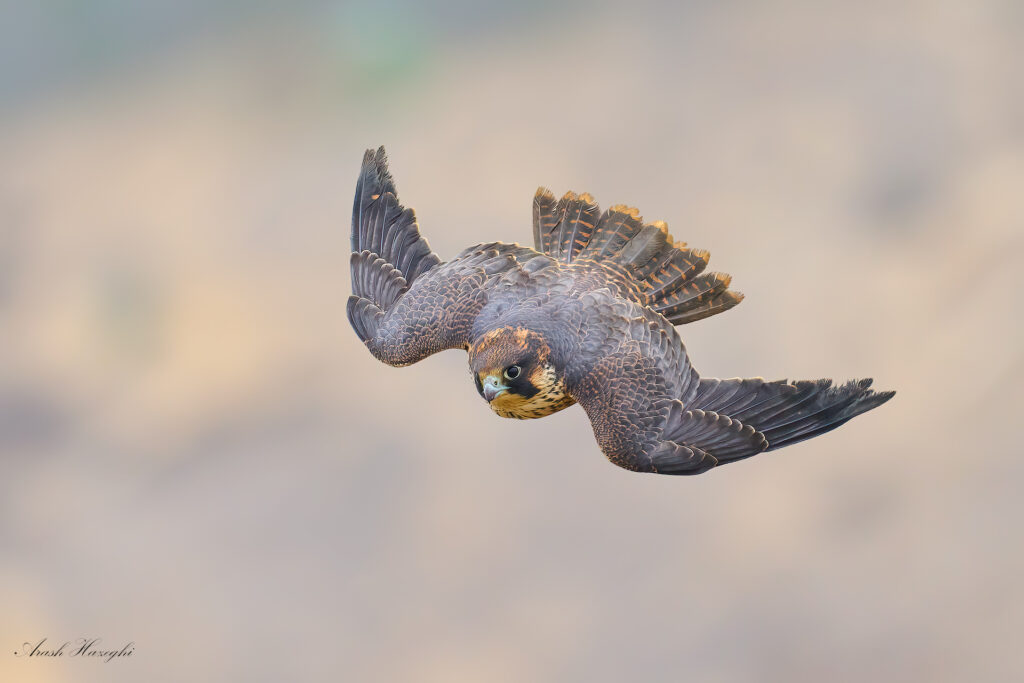
Another juvenile peregrine falcon stoop frame. Shot with A1 and 200-600mm f/5.6-6.3 G. ISO-2500 f/6.3 1/3200 sec. handheld processed with C1P. Click on the image to enlarge
In the past decade I have been shooting at this location with various Canon and Nikon gear, I only managed a single stoop frame against color which also happened to be the only critically sharp frame in that sequence. In just 2 hours the A-1 produced more dynamic frames than the previous gear did in about a decade! Keep in mind that the Sony A-1’s AF system is the most sophisticated system out there and as a result has a steep learning curve. But after mastering the AF, shot like these become really trivial (when used with the optimal settings and technique). I explain my AF technique and settings in detail in my Sony AF guide.
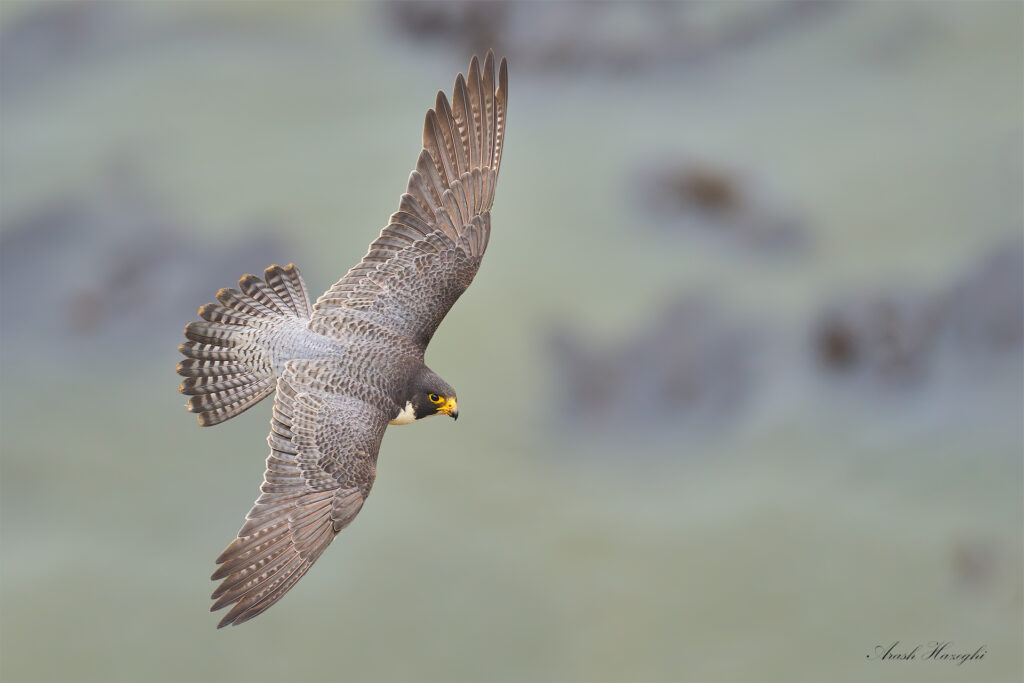
Peregrine falcon against the ocean. A-1 and 200-600mm f/5.6-6.3 G at 600mm. ISO-2500 f/6.3 1/2500 sec. Handheld. Processed with C1P. Click on the image to enlarge

Western sandpiper. A-1 and FE 600mm f/4 GM + 2X TC (1200mm). ISO-2000 f/8 1/4000 sec. Handled. Processed with C1P. Click on the image to enlarge.
Compared to the A-9 II, which itself was the previous best in class for action AF, the A-1 adds one noticeable feature: Bird eye priority AF (BEA). When enabled the camera gives priority to tracking the bird’s eye/head regardless of the AF pattern selected (please refer to my guide for more details). This is a first for a Sony camera. This feature uses machine learning (ML) to discern the eye of the bird from other elements in the scene. In my experience this feature is not a gimmick like some other cameras. It works well most of the time, but it is not 100% bulletproof yet either. Sometimes it grabs the wrong part of the bird and sometimes it does not detect the eye at all. As you can imagine the training data most likely did not include rare and exotic species. I talk about these specific conditions in my guide. The nice thing about Sony’s implementation of the BEA is that it is an enhancement rather than an exclusive AF mode. This means if the camera is not able to discern the eye, if the bird closes its eye or turns its head, it will just revert to the selected AF pattern and continue tracking in the mode selected by the user. The AF doesn’t jump around or became erratic like the Canon R5. As soon as the eye is detected again, the camera will simply switch to BEA and track it. Given this thoughtful implementation, I recommend enabling BEA for all subjects/conditions. Note that if you are shooting in extremely cluttered environments the BEA may not engage but such situations aren’t ideal for avian photography and should be avoided anyway.
The other point to consider is that in a typical flight distance, most of the bird falls inside the DOF so precise location of the focus plain does not matter that much. But when the bird is close, the camera may sometimes grab the wing tip, or the feet and the head area will fall outside of the DOF. I have had quite a few great frames ruined by this issue throughout the years. Fortunately most of these cases are covered by BEA. After several tens of thousands of frames with the A-1 I can’t recall more than a handful of frames where the focus had grabbed the wing tip.
The example below shows an American avocet flying towards the camera. This is a full frame image taken with the FE 600mm f/4 GM + 2X TC (1200mm), handheld. You can imagine how close the avocet was. If the focus falls on the feet or even the belly, the head and eye will be totally soft since the DOF is only 1-2 inches. The BAE locked on the eye and tracked the bird all the way to MFD.
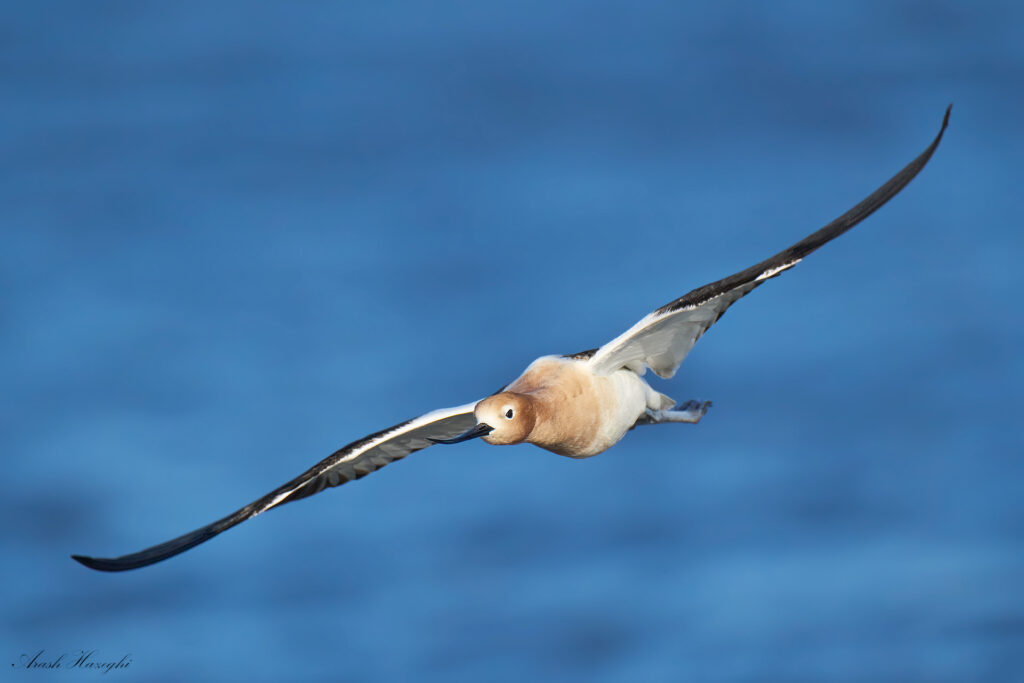
American avocet. Western sandpiper. A1 and FE 600mm f/4 GM + 2X TC (1200mm). ISO-1600 f/8 1/4000 sec. Handled. Processed with C1P. BAE was active and locked on the eye. Click on the image to enlarge.
Here is another example, Forster’s terns with full forward stoke. In this case AF locking anywhere other than the head would be fatal for this image (feet or wings).

American avocet. Western sandpiper. A1 and FE 600mm f/4 GM. ISO-1250 f/4 1/4000 sec. Handled. Processed with C1P. Click on the image to enlarge. BAE was active and locked on the eyes
I expect Sony to steadily improve the BAE as time passes and more training data is collected and used.
AF Consistency vs. a one-time show :
Sony’s AF performance is very consistent even when shooting at 30 fps. There are no significant shot-to-shot micro-variations or AF drift that is typically seen in other cameras. This gives the user behind the camera confidence. Part of this is thanks to the multiple variable-speed linear or XD linear motors fitted in the Sony telephoto lenses such as the FE 600mm f/4 GM and even the low-cost FE 200-600mm f/5.6-6.3 G. At 30 fps a very fine granularity in AF adjustment is required from shot to shot to give a high percentage of critically sharp frames in a burst. This brief video from Sony shows the motors in action. In comparison the competition namely the Canon EF 600mm f/4 IS MKIII and the Nikon 600mm f/4E FL still use the old ring-type servo motors (USM/SWM) originally developed in the late 1990’s. Consistent AF that nails every frame at 30 fps is likely not possible with the older motors.
The example below shows typical AF accuracy during a 30 fps burst with the A1 in low light (ISO-3200) and low contrast condition with the FE 200-600mm f/5.6-6.3G zoom lens. I have never seen such level of consistency with other equipment. Note that only newer Sony lenses have the sophisticated motors required for 30 fps shooting but this includes all the lenses of interest to bird photographers. When a non-compatible lens is mounted, the A-1 will reduce the burst speed to account for the lens’s AF drive as opposed to just blindly firing at 30 fps with a high percentage of semi-soft frames, like some of its competition.
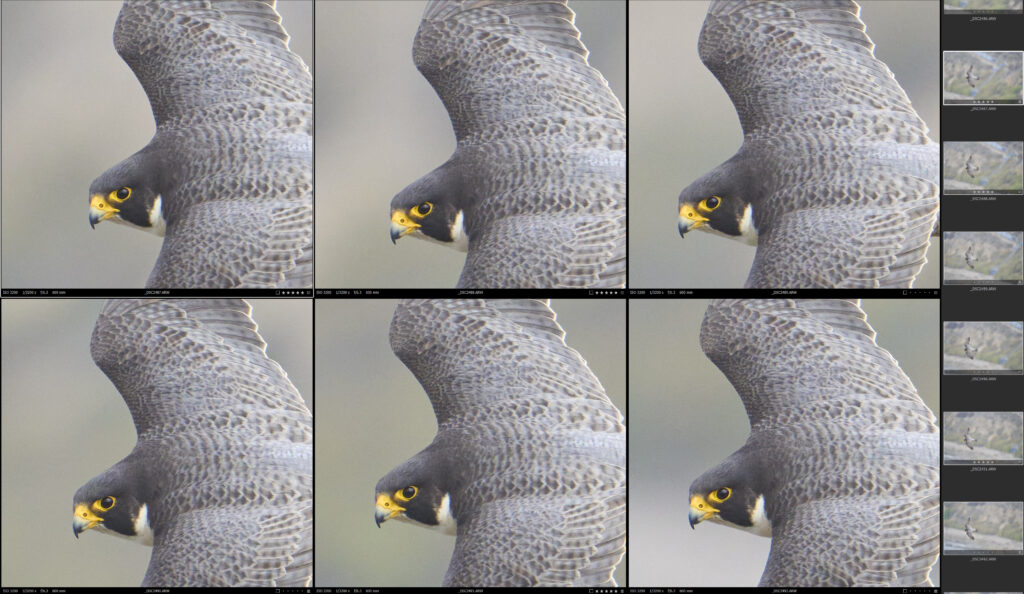
100% crop from raw (C1P screen shot) showing 6 consecutive frames from a 65 frame burst. These frames are equally sharp. With a typical DSLR there are usually a few soft frames in between. Click on the image to enlarge

Peregrine falcon (male). A-1 FE 200-600mm f/5.6-6.3 G. ISO-2000 f/6.3 1/2000sec. handheld. Processed with C1P. Click on the image to enlarge.
The AF does not drift away from the subject even with the subject is small and against a similar background. The image below is one of a 43-frame sequence with all equally sharp.
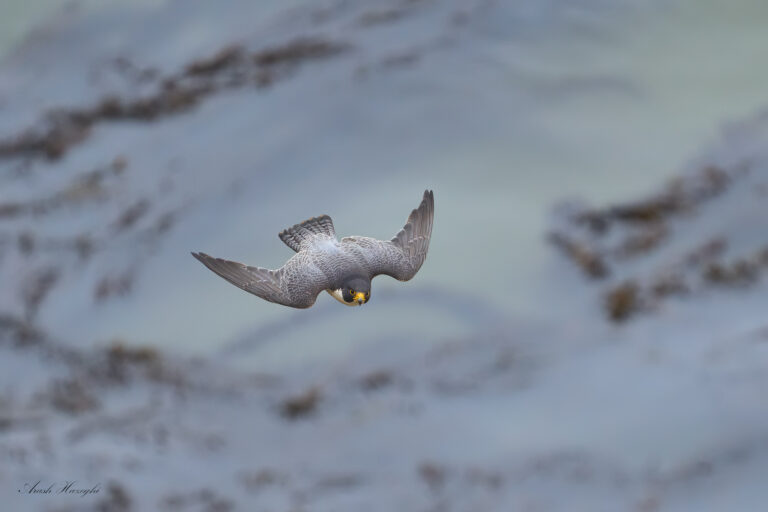
Peregrine falcon (male). A1 and 200-600mm f/5.6-6.3 G at 600mm. ISO-2500 f/6.3 1/3200 sec. handheld. Processed with C1P. Click on the image to enlarge. The falcon was approximately 10% of the frame.
To deliver this consistent performance at 30 fps the AF sampling is also done at a rate of 120Hz (AF is sampled, calculated and adjusted 120 times per second or ~10x higher than other pro cameras). Consistent AF at 30 fps means photographer can capture most attractive wing positions/poses in just one pass of a bird. All of the examples below were made from just one pass of a single bird that flew without warning. While images like these are theoretically possible to make with other cameras, it will take them many many more passes and more “luck” to come up with the perfect wing position.
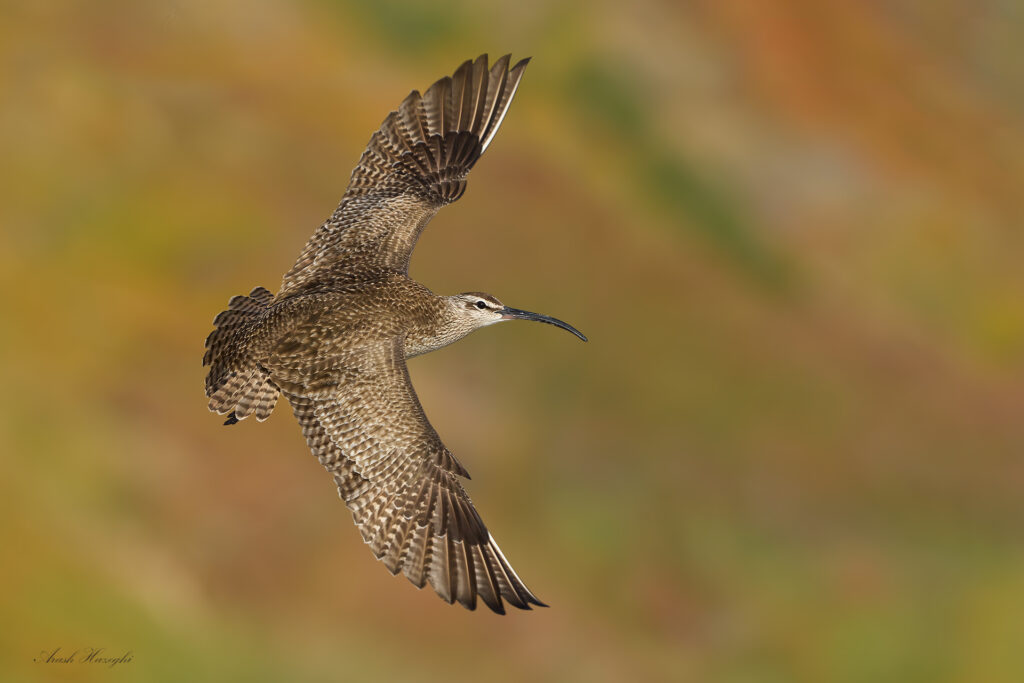
Wimbrel. A1 and 200-600 G at 450mm ISO-800 f/6.3 1/4000 sec. Handheld. processed with C1P. Click on the image to enlarge
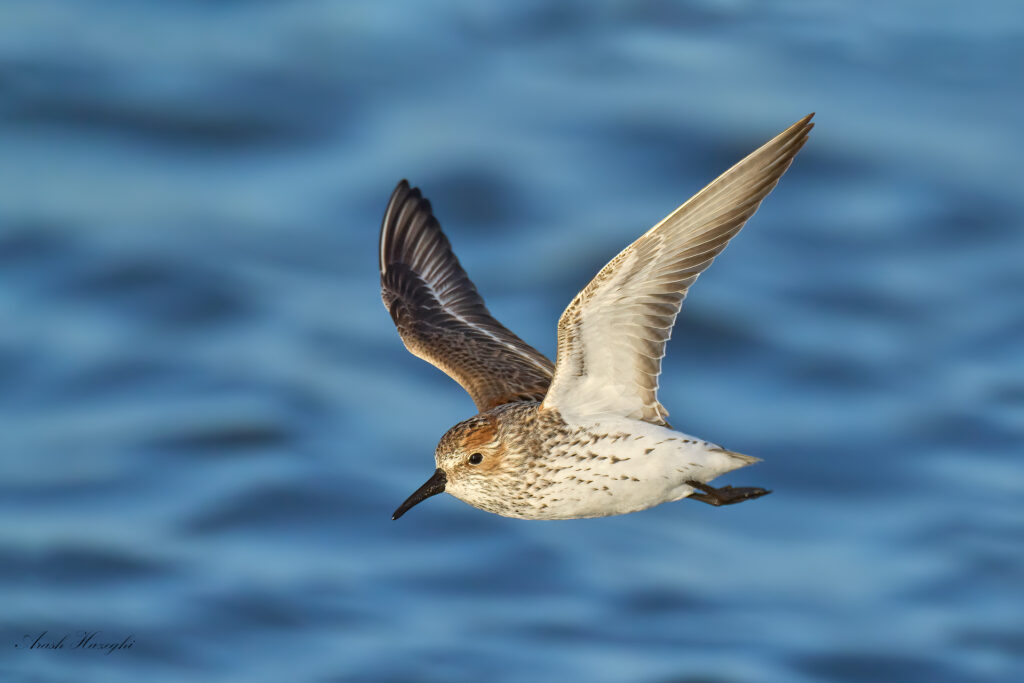
Western sandpiper. A1 and FE 600mm f/4 GM + 2X TC (1200mm). ISO-2000 f/8 1/4000 sec. Handled. Processed with C1P.
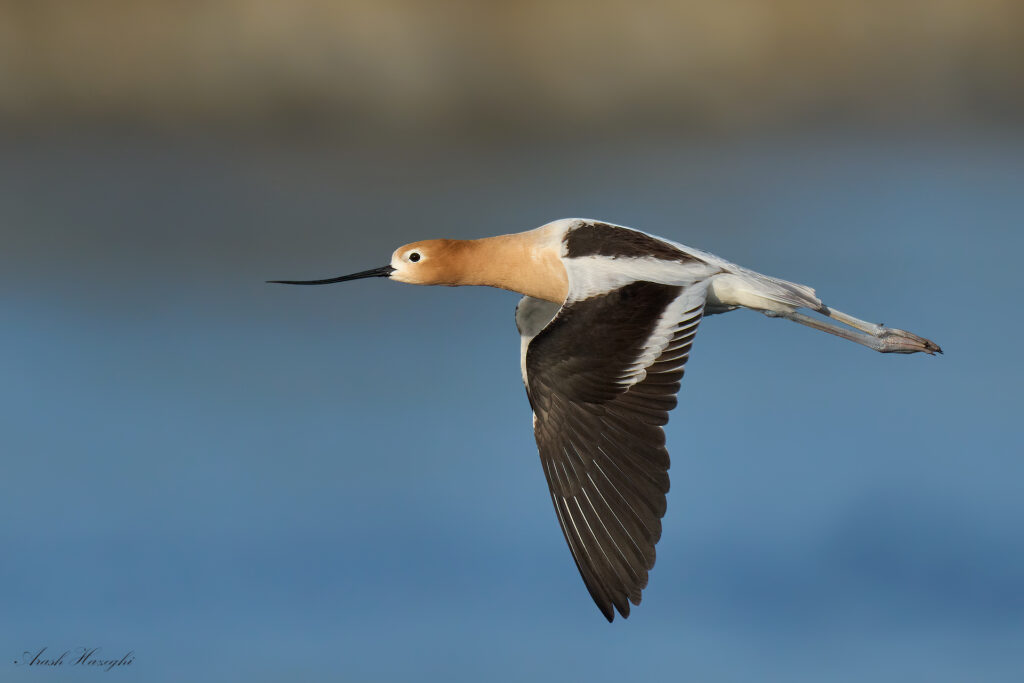
American avocet. Western sandpiper. A1 and FE 600mm f/4 GM + 2X TC (1200mm). ISO-1600 f/8 1/4000 sec. Handled. Processed with C1P. Click on the image to enlarge.

Female bufflehead. A1 and FE 600mm f/4 GM + 2X TC (1200mm). ISO-2000 f/8 1/4000 sec. Handled. Processed with C1P. Click on the image to enlarge. BEA was active and locked on the eye.
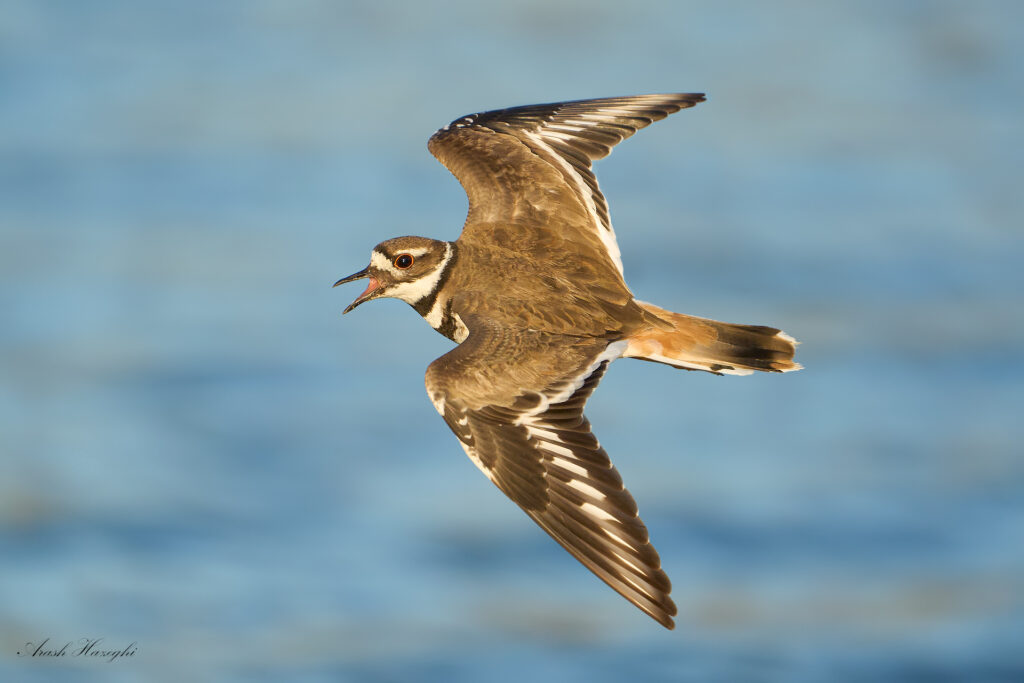
Killdeer. A1 and FE 200-600mm f/5.6-6.3 G at 600mm ISO-4000 f/6.3 1/4000 sec. Handled. Processed with C1P. Click on the image to enlarge.
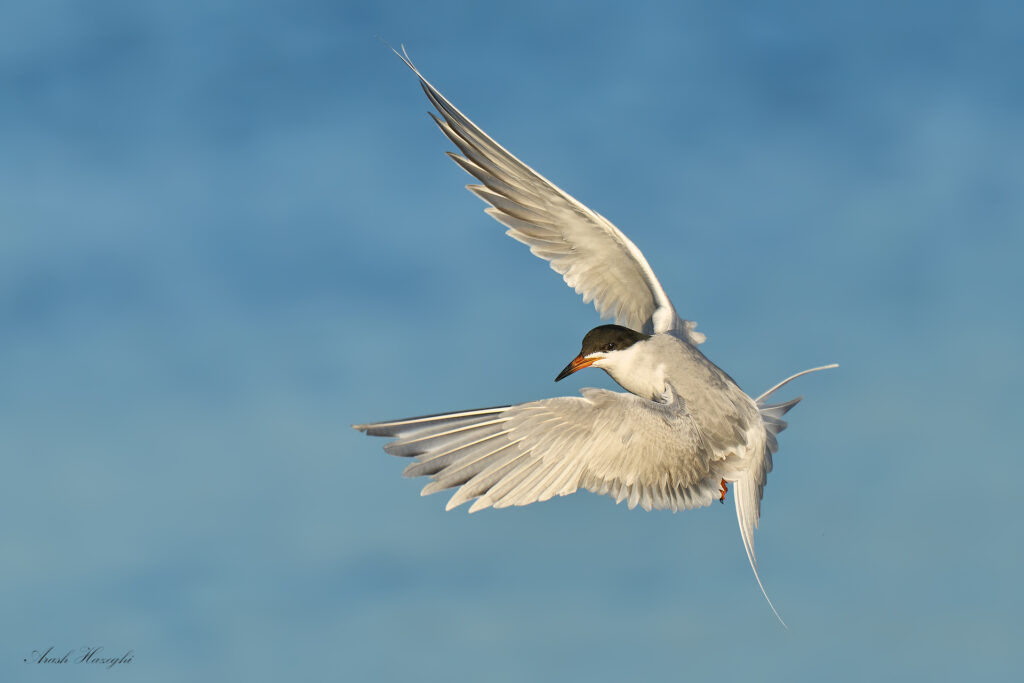
Forster’s tern. A-1 FE 600mm f/4 GM. ISO-640 f/4 1/4000 sec. Handheld. Processed with C1P. Click on the image to enlarge.
In summary the Sony A-1 AF system is by far the best AF system ever made by anyone for BIF and action and is unlikely to be matched in the near future. The second closest camera is the A-9 series, all others are a long distance behind when it comes to this subject. The AF alone easily makes the A-1 the best camera on the market for BIF.
EVF eye sensor issue:
The Sony A-1 and the A-9 MK II, to some degree, suffered from the EVF eye sensor mishap. This issue happens when the photographer is shooting with the sun behind their neck in the early or late hours of the day. Given most attractive avian images are made under such conditions this is an incredibly frustrating issue and one that made the users to go to such extremes as taping the eye sensor. The root cause of the problem seems to be saturation of the IR eye sensor in bright light in combination with the EVF timeout feature. No particular setting in the camera was able to remedy this issue. As of late June 2021, Sony indicate they have addressed this issue in firmware update 1.10. One example where this issue happens is shown in the image below. I passed this information to Sony pro back in May so I hope the new firmware has fully addressed it. I yet have to try the camera in different conditions to make sure the issue has been resolved and I encourage Sony to issue a similar update for the A9 /A9 MKII.

When the sun is directly behind the photographer and low in the sky, the A-1 EVF refused to turn on when the user would aim the rig towards the subject (birds on the lake in this example). The EVF wouldn’t turn on even when shooting a burst. This behavior could cause many lost frames.
Summary
The Sony A-1 is the hyper car of the camera industry. In reality it is a supercomputer in a camera shell with the level performance and features that seems ahead of the time even in 2021 and would have been considered almost “science fiction” only a few years back. When it comes to action and BIF, it is the best camera on the planet by far. At $6500 the A-1 is the most expensive still camera Sony have ever made. In comparison however it looks like a great value for money when compared to the similarly priced Nikon D6 and Canon EOS-1D X MKIII both of which are outclassed and frankly obsolete next to the Sony. Incidentally the original Canon EOS-1D X was about the same price when introduced back in 2012, which would be about $7600 in today’s dollars. Given the A1’s 50-mega pixel high-resolution sensor, and its lightweight body with a detachable grip, there is no need for a two or three camera solution anymore which also favors Sony in terms of the total system cost compared to Nikon and Canon.
The Sony A-1 has revolutionized action photography forever and has proven that the DSLR is all but dead . The verdict is thus highly recommended (assuming the EVF eye sensor issue is fully fixed now)
Pros
- The best AF system on the planet by far for shooting BIF and action. If it can fly, this camera can focus on it.
- The highest overall image equality of any full-frame digital still camera ever made including high-ISO performance.
- Huge EVF with true blackout-free performance capable of 240Hz refresh rate.
- No rolling shutter effect.
- large buffer with rapid write speed (CFexpress type-A only)
- compact and lightweight body, detachable vertical grip.
- Industry leading 8K video and 4K 120p for a still-focused camera with low compression and a variety of formats.
- Excellent battery life for burst shooting.
- no overheating. No funny limitations.
- competitively priced to much inferior cameras.
Cons
- Low-resolution rear LCD.
- CFexpress type A is rare, expensive and slower than type-B. At least one of the slots should have been made to accept type-B cards.
- At $6500 the optional vertical grip should be included with the camera. A higher quality double-charger is more appropriate for this camera than the single charger included.
- Poorly written manual, online guide isn’t much better.
- EVF resolution drops in normal mode when continuous AF is engaged (this issue has been communicated to Sony and may be addressed via FW update)
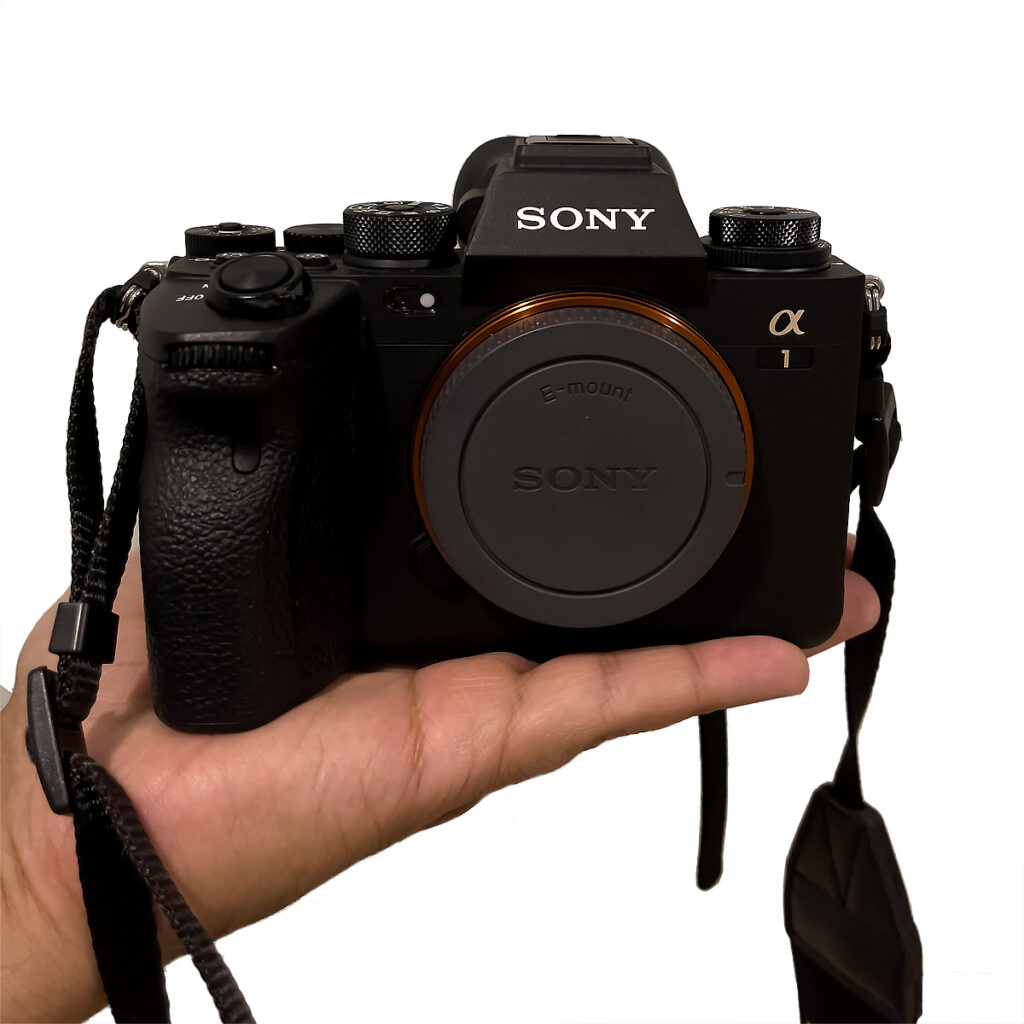
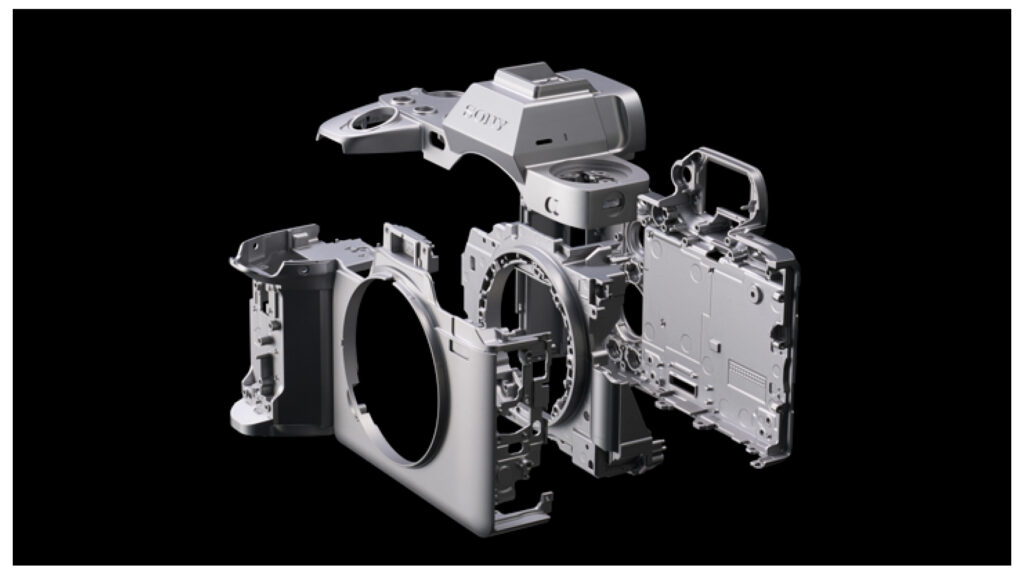

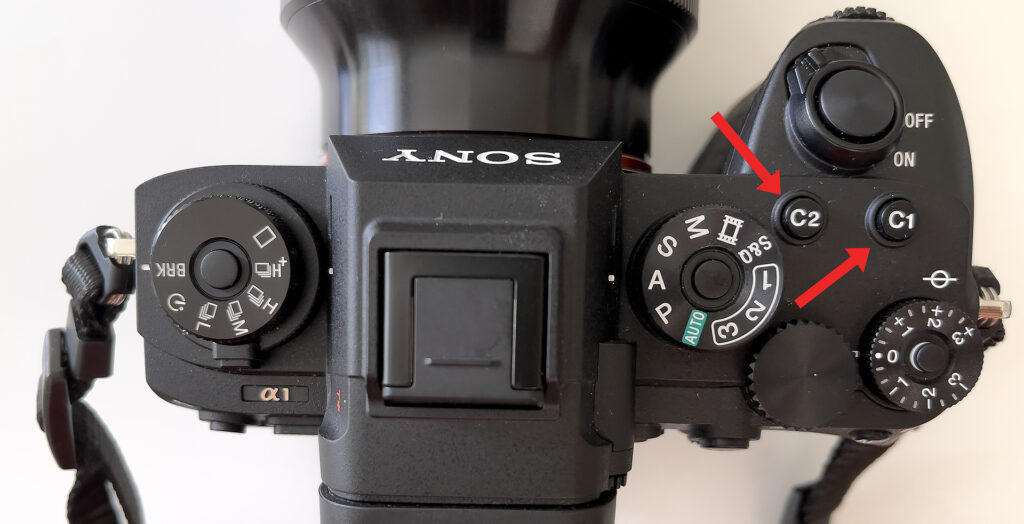

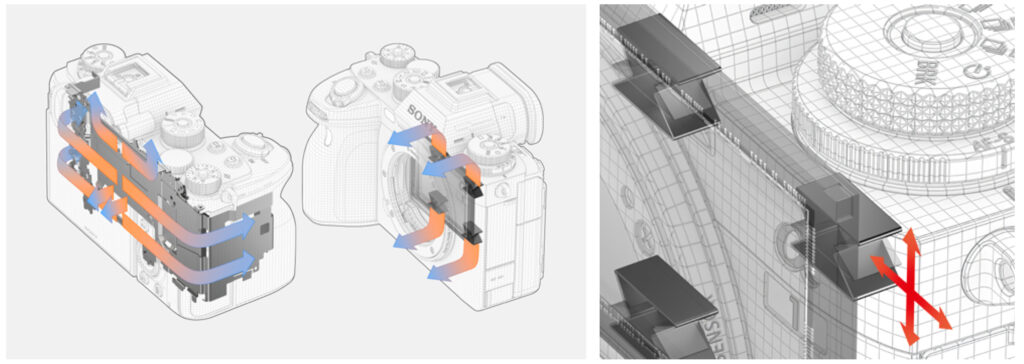

Arhi, been sitting on the fence ads to whether to go with Sony A1, but on reading your review am totally confined to go with it. Well done and thank you for a very professional review.
This was a extremely helpful review !
So glad you took the time to create a set up Guide.
I have not yet purchased the camera and was waiting for the EVF issue to be resolved.
I will definitely buy the camera as well as your set up Guide.
Are thinking to follow up and confirm the software update resolved the EVF?
I plan on waiting until September to purchase the camera. I will get you guide this week though!
If you have any suggestions please advise.
Thanks Fred,
so far I have not experienced the EVF sensor issue. I am going to update the review after more shooting just to be sure.
Best
I have never been one to switch brand to brand. 25 years of Nikon, then 25 years of Canon before switching back to Nikon 2 years ago for the D850 and the fantastic500 PF which I have been very happy with. I know Nikon or at least feel Nikon will be playing catch up for many years and am ready to go back to Canon or move to Sony. This review from a trusted tester really has me leaning toward Sony who probably will be leading the pack for the foreseeable future. Thanks for the fantastic review!
Jim Zipp
Ari, thank you for a fabulous review covering all the important aspects in a concise and easy to understand fashion. I do have one question. In the AF paragraph, when explaining BEA you state that the Canon R5 becomes erratic when losing the eye of the bird? Would you elaborate on this. My R5 does not exhibit this behavior, in fact if the AF eye detect loses the eye it most often makes a larger box around the head, or several smaller boxes on the breast. My experience is that these images are generally tack sharp. Again thank you for a great review.
Hi Jean, thanks so much for your comments.
What I meant applies to photographing fast subjects like a peregrine falcon stooping against a varied BG. For example I tried tracking a kestrel -another fast small raptor- darting through the frame and the R5 AF was all over the place even locking on the grass below the bird. For perched and stationary birds it is probably good enough. Canon AF has never really been up to the task in delivering consistent performance for BIF under challenging conditions and unfortunately the R5 is not an exception although it is much better than canon’s DSLR’s including their flagship 1DX series.
I recently switched from Nikon DSLR land (2 x D850’s) to Sony mirrorless (A1 and A7RIV) and concur that DSLR’s COULD get you many of the same shots the A1 gets but the A1 gets so many more of them. The camera is SO intelligent it leaves the photographer free to concentrate on technique, composition and artistry (which you obviously have done). May I ask, are the falcon shots from Palos Verdes?
Hi Steve, thanks the images are from a different location
Posting for Artie Morris
Howdy Boys and Girls,
I hope that you are all well and safe. Thanks to Arash for this excellent review. I’ve had an a1 since day one, and now own two. For bird photography, all other camera bodies are obsolete as of 28 July 2021.
So that I could write a guide for the Canon R5, I used one for about three months. I agree that it is the best Canon body ever for birds in flight, but the AF system pales in comparison with the SONY a1. Can you say, “soft, sharp, sharp, soft, sharp, soft, soft …)
Do understand that if you purchase an a1 you will not consistently be making the images that Arash makes, images that you see above. Perhaps there are one or two of you who might do pretty well, a lot better than I do, or perhaps you are Jim Zipp 🙂 Consistently creating sharp, well-composed flight images like Arash is a huge challenge.
As I write often when critiquing Arash Hazeghi’s amazing flight shots — many made hand held at 1200mm — in the Avian Gallery on BPN, “Stronger (sometimes younger) folks who have fast reflexes, stamina, superb fine motor skills and hand-eye coordination, are in the best position to take advantage of the amazing AF systems in today’s best mirrorless camera bodies. Add in large doses of avian knowledge and determination, and you might come close.
with love, artie
Great post – thought you might appreciate this https://youtu.be/a-2VXvmXUxQ.
Both the a9 and a1 worked extremely well at tracking once focus was acquired but the a9 was a bit slower at acquiring focus. Love that 100-400GM though, adds a bit of extra ping to the images compared to the 200-600.
Impressive technology in these cameras. Photographing swallows pupils while they are flying – who would have thought!
Cheers and stay safe.
Very well written., and extremely informative. Thank you.
Hi Arash,many thanks for many great articles over the years.
Am considering R5 and A1
Many sites are reporting all mirrorless are having problems finding focus on birds against busy background, both BIF and perched.
How to overcome? Is it covered in your A1 guide?
Hi Phil, the A1 has no such problem, neither did the A9 II.
best
[…] camera in the market at 30 fps RAW. The AF system in the A1 is also the best in the business as I reviewed here. In my short time with the A9 III, I did appreciate the added flexibility to the AF system, but […]